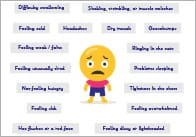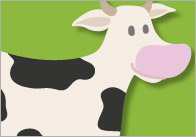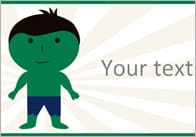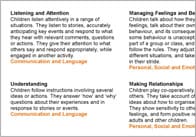The Importance of Free-Flow Play

There is a lot of debate at the moment about the importance of learning through play. Against this backdrop we thought we’d take a brief look at the traditional notion of free play before giving an outline of a rather new take on things as expressed in a 2010 book by Sue Grieshaber and Felicity McArdle (educators and researchers at the School of Early Childhood, Queensland University of Technology, Australia).
According to Anne Anne Henderson:
“A good free play session offers a rich play and learning experience for children. It allows each child to progress at his/her own pace, it gives children practice in choosing, and in dealing with the consequences of choice, and it encourages a more flexible and open-ended use of the group’s resources. Like all genuine freedom, however, it takes a lot of effort.”
The following is an abridged extract from Tina Bruce’s 1991 book Time to Play in Early Childhood Education:
The 12 Features of Play:
1) Play is an active process without a product
2) Play is intrinsically motivated
3) Play exerts no pressure to conform to rules, goals, tasks or to take definite directions.
4) It is about possible, alternate worlds which involve the concepts ‘supporting’ and ‘as if’ and which lift the player to the highest levels of functioning. This involves being imaginative, creative, original and innovative.
5) Play is about participants wallowing in ideas, feelings and relationships, and becoming aware of what we know (metacognition).
6) It actively uses first hand experiences.
7) It is sustained, and when in full flow, helps us to function in advance of what we can actually do in our real lives.
8) In play we use technical prowess mastery and competence that we have previously developed. We are in control.
9) Children or adults can initiate play but each must be sensitive to each others personal agenda.
10) Play can be solitary.
11) It can be with others each of who is sensitive to fellow players.
12) Play integrates everything we learn, know, feel, relate to and understand
Adult led tasks should not be called ‘play’ but they can instigate play situations. An adult led task such as we find in structured tutoring does not fulfil features 1,2,3,5,8,9,12 of play.
Ways to help children develop high functioning free flow play
1) Organise the play environment so that it is indirectly structured – pay careful attention to the organisation of materials so that they are accessible.
2) Indirectly structure the use of time using sensitively chosen moments for direct teaching.
3) Ensure that adults offer language to support the children’s learning.
Writing in Nursery World Sue Grieshaber and Felicity McArdle challenged the assumption that free play is necessarily a positive thing just because it is considered ‘natural’. Indeed, they argued that “play in the early years is not always innocent and fun…it is also political and involves morals, ethics, values and power…there are times when play is not always the best way for children to learn.” They backed up their assertion with reference to research by SK Ryan (Freedom to choose: examining children’s experiences in choice time’) in which it was demonstrated that play in child-centred approaches is often political and that power relationships can often form under the guise of freedom to choose.
According to Grieshaber and McArdle:
“The trouble with the idea that play is children’s natural way of learning is that ideas about what is natural in children are selective….Children use play for their own particular means and ends. In many cases these involve many identities, where they can position themselves more powerfully than others, sometimes so discreetly that their actions go unnoticed by staff”. When teachers are focused only on the educational valueof play, or choose not to intervene in children’s ‘free play’, it makes noticing or attending to unjust actions problematic”.
However, Grieshaber and McArdle were not seeking to dismiss the value of learning through play but rather they were simply suggesting that practitioners should “look more deeply at what is being learned, and how that learning is occurring”. Their approach certainly offers a new perspective. Their book ‘The Trouble with Play’ is available from Amazon
Peter
Popular Teaching Resources
Stay Up To Date
Sign up for our newsletter and we’ll let you know when we create new early years resources.






Comments